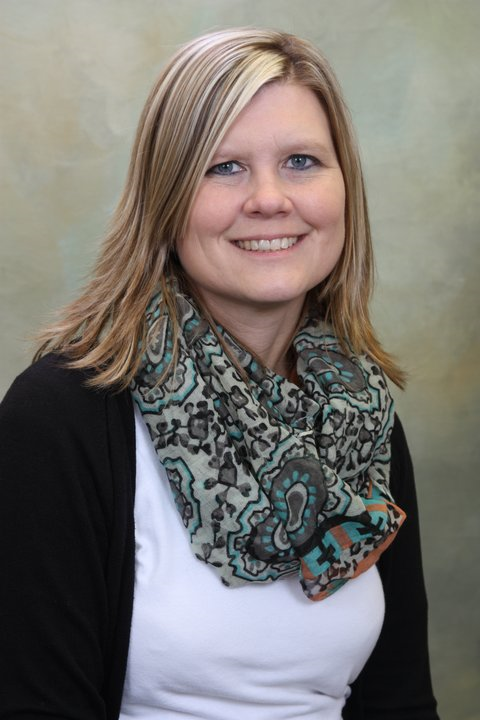For many of us, this has been a crazy year so far. The term “polycrisis” has become all too familiar with the impact of multiple overlapping crises at once. As we experience the interconnectedness of crises where solutions in one area can often lead to unintended consequences in another area, finding energy through connectedness is important. This brings to mind the idea of finding our “New Power.” But what is “New Power?” How can our crises or difficulties in health professions be changed by this “New Power?”
To address these questions, Megan Ranney, MD, MPH, FACEP gave an engaging talk during the Executive Leadership in Academic Medicine April 2025 Spring Symposium regarding the idea of “New Power” and how we can make it work for us in health professions. Her talk was based on principles from the book titled “New Power: How Power Works In Our Hyperconnected World - And How to Make It Work for You,” which discusses old versus new power.
The essence of old versus new power centers around values and how those values are structured and realized. “Old Power” focuses on strict, formal structures, centralized power, expertise, confidentiality, formal governance, and managerialism. “New Power” focuses on crowd-sourcing, collaboration, participation, leaderless structures, and transparency. “Old Power” is like currency. It is held by few, closed, inaccessible, and leader-driven. “New Power” operates like a current. It is made by many, open, participatory, and peer-driven. The goal with “New Power” is not to hoard power but to channel it.
These behaviors are illustrated more fully in “The Participation Scale,” and progression is shown from:
- Sharing or taking other people’s content and distributing it like Facebook.
- Shaping such as remixing or adapting existing content or assets with a new message or flavor like Nike by You.
- Funding such as endorsing with money like KickStarter.
- Producing or creating content or delivering products and services within a peer community such as YouTube, Etsy, or Airbnb.
- Co-owning in ways such as seen in models like Wikipedia and open-source software.
Dr. Ranney provided personal examples of harnessing “New Power” in the health professions. In particular, she noted the #GetUsPPE movement that became a viral social call within medicine at the height of the COVID-19 pandemic raising $2.5 million and delivering more than five million units of PPE through a network of volunteers in less than five months. This example illustrates the possibilities for change through “New Power”.
To develop new power capacity, we are encouraged to consider three essential tasks: (1) audit our power by starting a conversation about where you are and where you want to be, (2) channel your harshest critic by occupying yourself or having an honest conversation about yourself, and (3) develop a movement mindset by mobilizing others. We also need to remember that “Old Power” still has a place and learning how and when to use old versus new power is key.
What ways can “New Power” be used?
- Social Movements: For example, #GetUsPPE which demonstrates the power of collective action and grassroots organizing, where individuals come together online and offline to raise awareness, mobilize support, and drive change.
- Businesses: Companies like Airbnb and Uber leverage the power of networks and platforms to connect users and enable new forms of exchange and collaboration, empowering individuals to participate in ways previously unimaginable.
- Online Communities: Platforms like PatientsLikeMe and Reddit showcase how individuals can share information, support each other, and even influence healthcare decisions based on collective knowledge and experiences.
- Crowdsourcing: Approaches to problem solving that allows large groups of individuals to participate in solving problems then sharing solutions like the MyHeartMap challenge which mapped Automated External Defibrillators (AEDs) around Philadelphia County.
- Civic Tech: Initiatives that use technology to engage citizens in local government processes exemplify how “New Power” can be leveraged to rebuild trust and foster a more participatory culture.
- Participatory Budgeting: Allowing citizens to directly vote on how public funds are allocated, empowering individuals to have a say in how their communities are governed.
It is clear that “New Power” can be meaningful, measurable, and impactful. We can all benefit by fostering “New Power” in our health professions. It’s time to turn the “polycrisis” into solutions while refreshing and refilling ourselves. What “New Power” have you seen or used lately? Share your thoughts at #MedEdPearls!
#MedEdPearls are developed monthly by the Health Professions Educator Developers on Educational Affairs. Previously, #MedEdPearls explored topics including Dual Operating Systems, Flourishing, and Earthquakes of Thought.

Machelle Linsenmeyer, EdD, NAOME (Assessment, ’07) is professor of Clinical Education and assistant vice president for Institutional Effectiveness and Academic Resources at West Virginia School of Osteopathic Medicine. HMI has made an impact on Machelle’s career by expanding her network in support of new and evidence-based ideas to advance medical and health professions education related to assessment and technology. Machelle’s areas of professional interest include academic portfolios/dashboards, academic management systems, and entrustable professional activities. Machelle can be followed on LinkedIn or contacted via email.
#MedEdPearls

Jean Bailey, PhD – Virginia Commonwealth University School of Medicine
Rachel Moquin, EdD, MA – Washington University School of Medicine

